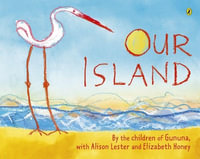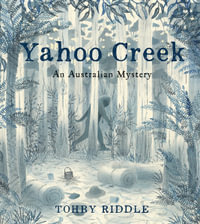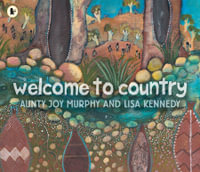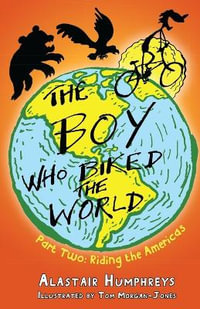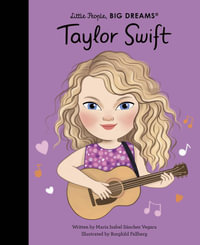A year brings many changes to a Hmong girl's world. Paj Ntaub and her family move to their house in the summer, when her mother's belly is round with twins, and the garden is flourishing. Across the street live Ruth and Bob, an elderly couple with whom they exchange friendly waves. The seasons change, twins are born, and Ruth dies. To comfort Bob, Paj Ntaub makes a chalk drawing on his driveway that features elements from her year and nods to the story cloth her family keeps that commemorates their journey to America. Although readers see the story cloth on the wall and at the end, what it details is never really explained, though a brief note on the copyright page describes what it is. This is more of a relationship story, showing how Paj Ntaub engages with her brothers and grandmother and how neighboring families come together when sadness strikes. Kim's digital artwork using pastels, graphite, watercolors, and hand-scanned textures captures the warmth of family, the charm of changing seasons, and the depth of friendships.--Booklist
-- "Journal"
A young Hmong girl settles into her new home, and as the seasons change, so does the world around her. A Map Into the World is a beautiful and hopeful story about love and loss, family and friendship, and it belongs in every reader's hands.--Sarah Park Dahlen, Associate Professor in the MLIS Program at St. Catherine University
-- "Other Print"
A young Hmong American girl shares the small things of wonder that make up her world. When Paj Ntaub moves into a new green house with big windows with her family, the garden grows with 'tomatoes, green beans, and a watermelon as round as my mother's belly.' Soon, the green house becomes their house. Paj Ntaub helps 'Tais Tais hang the special story cloth about how the Hmong got to America.' She exchanges waves with her neighbors Bob and Ruth, an elderly white couple even older than Tais Tais. And changing seasons usher in life and death. In gentle prose, Yang's picture-book debut explores nature, community, and connection. Twin brothers are born amid the summer bounty in the garden. On a snowy, cold morning, loss arrives, and bare gingko trees '[reach] for the sky with their thin fingers' against the new emptiness of the house across the street. When the world becomes green again, Paj Ntaub draws together these connections in a neighborly gesture of comfort. Using digital graphite, pastels, watercolor, and scanned handmade textures, Kim brings detailed dimension to the green house and the world around it. Alternating perspectives capture the expansiveness of the outside as well as the intimacy of Paj Ntaub's observations. Contemplative, curious, and kind.--starred, Kirkus Reviews
-- "Journal"
A Hmong American family--mother, father, Tais Tais (grandmother), and little girl--moves into a cozy house across the street from a loving elderly couple, Bob and Ruth. The girl's twin baby brothers are born; the seasons pass; the outdoor landscape changes; and in wintertime Ruth dies. When spring comes, Bob takes his seat on the 'special bench' that he and Ruth had shared; it's clear that he is grieving, and the little girl uses her skill with sidewalk chalk--and her great compassion--to brighten up his outlook and their neighborhood. Yang's story is an understated (if somewhat sentimental) snapshot of family life over the course of a quietly transformative year. The text is straightforward and spare, with touches of lyricism ('The house across the street looked empty. The gingko trees reached for the sky with their thin fingers'). Culturally specific details are naturally incorporated into the text and into the textured, delicate-lined, digitally created illustrations.
A brief glossary on the copyright page explains that the protagonist's name, Paj Ntaub, is both a girl's name and the word for the traditional needlework often used to create story cloths like the one hanging on the family's wall (also shown in close-up detail on the endpapers), 'which visually represent and document the experiences of the Hmong people across time, including families' journeys as refugees.'--The Horn Book Magazine
-- "Journal"
Full of heart. And hope. This is exactly the kind of book I want to read to my daughter, and I wish I could hand a copy to every kid. Powerful, beautiful, and transcendent.--Newbery medalist and New York Times bestselling author Matt de la Pena
-- "Other Print"
In A Map into the World, narrated by a shy little girl named Paj Ntaub, a Hmong American family moves into a house across the street from an elderly couple named Bob and Ruth, who befriend them. Through the eyes of Paj Ntaub, we experience the quiet joys of gardening, family life, and the change of seasons. After Ruth dies, Bob is overcome with sorrow. Paj Ntaub decides to comfort him with a chalk drawing of the world as she knows it, a world filled with wonder and sorrow and happiness. There is a timeless, familiar quality to Kao Kalia Yang's lovely, gentle picture book that will keep readers young and old returning to these pages again and again.--Alison McGhee, #1 New York Times bestselling author of Someday
-- "Other Print"
It's summer, and young Paj Ntaub and her family have just moved into 'the green house' when she spies an elderly white couple through her window. These neighbors--Bob and Ruth--routinely sit outside on their 'special bench.' They assume their perch throughout autumn, but come winter they stay indoors. One morning Paj Ntaub notices cars parked in front of the couple's house, and her father tells her that Ruth has died.
When spring arrives, Paj Ntaub sees Bob sitting alone on the bench. Paj Ntaub has an idea. With Bob's permission, she does a chalk drawing in his driveway: 'I started my picture with a teardrop./ And then I made it splatter like sunshine.' She festoons the asphalt with neighborhood sights--gingko leaf, worm--and tells Bob that she has created 'a map into the world. Just in case you need it.'
Kao Kalia Yang, author of the much-praised adult titles The Latehomecomer: A Hmong Family Memoir and The Song Poet: A Memoir of My Father, has written a quietly uplifting picture book. A Map into the World suggests that when a family's equilibrium is upset (by a death, by a move), the neighborhood family (in all its ethnic variety) can help restore it. Illustrator Seo Kim realizes the book's largely outdoor setting: she individuates the veins on leaves; tree bark is invitingly ridged. In a breathtaking touch, Paj Ntaub's Hmong grandmother's 'special story cloth'--too small for readers to appreciate as it appears within the story--fills the book's endpapers. --Nell Beram, freelance writer and YA author
Discover: This handsomely composed picture book spotlights a friendship between an elderly white couple and a Hmong American child who moves into the neighborhood.--Shelf Awareness
-- "Website"
When Paj Ntaub and her family move into their new house, the girl loves their green new garden and enjoys waving to the friendly old couple across the street, Bob and Ruth. New babies at home bring a big change, but there's a big change at the neighbors', too, after Ruth dies in the fall. When spring comes again, though, Paj Ntaub sees Bob outside again, and she uses her sidewalk chalk to draw him a beautiful picture that maps him a way back to the world. Jacket copy suggests that this is biographically based; it's a sensitive yet well-controlled exploration of a child's early experience with loss and condolence, and it's realistic that Paj Ntaub's life doesn't focus entirely on Bob and Ruth but her neighbors remain significant in her literal and emotional landscape. The digital art is a textural delight, with grainy planes of color contrasting with trim black lines and the abundant botanicals of the garden. Touches of Hmong tradition in the family's wall hanging and in our heroine's artistic creation add depth to the story (a brief glossary/pronunciation guide for Hmong words appears on the copyright page). A gentle, subtle introduction to life's changes and seasons, this comfortingly allows kids to approach difficult topics from a safe distance.--The Bulletin of the Center for Children's Books
-- "Journal"
With the clear, careful, and beautiful language we've come to expect from her, Kao Kalia Yang unfurls her first children's book, a journey waiting to reward our every step. This sad but heartening work reminds us how important it is that we care for our neighbors, and in so doing, we may discover we are not so different--a message that our children need now, more than ever.--Bao Phi, author of A Different Pond
-- "Other Print"
Yang (The Song Poet for adults), a Hmong writer making her picture book debut, offers a story about a girl who notices things. Young Paj Ntaub (both a girl's name and a term that nods to needlework tellings of Hmong experiences) moves with her family to a green house and helps to hang their story cloth 'about how the Hmong got to America' on the wall. When her twin baby brothers cry too loudly, her father takes her outside, where they wave to their elderly neighbors, Bob and Ruth. In lovingly detailed spreads, Kim, making her U.S. debut, draws all the things that Paj Ntaub sees: gingko leaves ('yellow like apricots'), winter snow, a worm. When Ruth dies in the winter, and Paj Ntaub notices Bob grieving come spring, she chalks a wealth of previously regarded details on his driveway--'a map into the world, ' she explains. Though age separates them, Paj Ntaub's accounting of everyday details reaches Bob--and gives voice to the child's experience, too. A distinctive story that weaves together threads of family life, community and culture, the natural world, and the power of stories.--starred, Publishers Weekly
-- "Journal"









